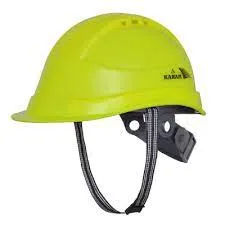An Overview of Lateral Deformation Safety Helmets from Leading Manufacturers in the Industry
The Importance of Lateral Deformation in Safety Helmets Insights from Leading Manufacturers
Safety helmets are indispensable in various industries, including construction, manufacturing, and sports. Their primary purpose is to protect the head from potential impacts and injuries. One critical feature of helmet design that has garnered increasing attention is lateral deformation, a mechanism that plays a crucial role in how helmets absorb energy during impacts. This article explores the significance of lateral deformation in safety helmets and highlights insights from leading helmet manufacturers on its implementation.
Understanding Lateral Deformation
Lateral deformation refers to the ability of a safety helmet to deform in a controlled manner when subjected to lateral (side) forces. When an impact occurs, whether from a falling object or a collision, the helmet must effectively absorb and dissipate the energy generated from that force. The lateral deformation helps stretch and compress the material, allowing the helmet to minimize the transfer of kinetic energy to the wearer's head, which is vital in preventing traumatic brain injuries.
The effectiveness of a helmet's lateral deformation is influenced by materials and design choices. Manufacturers are continually researching and developing advanced materials and technologies to enhance this aspect of helmet safety. For example, many modern helmets incorporate expanded polystyrene (EPS) foam and advanced composites, which provide superior impact resistance while maintaining a lightweight structure.
Design Innovations by Leading Manufacturers
Leading safety helmet manufacturers are at the forefront of innovation, constantly refining their designs to ensure maximum protection for users. Companies like MSA Safety, 3M, and Honeywell have invested in research and development to improve helmet performance regarding lateral deformation.
1. Material Selection Manufacturers are increasingly utilizing multi-layered materials that allow for better energy absorption. The outer layer often consists of tough thermoplastics, while the inner layer incorporates softer foams that can deform on impact, thus enhancing lateral deformation capabilities.
lateral deformation safety helmet manufacturer

2. Shell Design The shape of the helmet shell can significantly affect its performance. Streamlined and aerodynamic designs not only improve comfort and fit but also enhance how a helmet deforms laterally upon impact. Some manufacturers employ computer simulations and crash testing to refine their designs before bringing them to market.
3. Testing Standards Compliance with rigorous testing standards is crucial for helmet manufacturers. Certifications like those from the American National Standards Institute (ANSI) and the Occupational Safety and Health Administration (OSHA) assure consumers of a helmet's effectiveness. Many manufacturers subject their products to lateral impact tests, directly evaluating how well the helmet deforms under various conditions.
The Future of Helmet Safety
As awareness of workplace safety grows, the demand for advanced safety helmets will continue to rise. Leading manufacturers are likely to invest more in innovative technologies, integrating features like impact sensors and smart materials that can adapt to different types of impact forces.
Moreover, as industries embrace automation and robotics, the need for enhanced safety gear that can withstand unpredictable impacts will become even more paramount. Future helmets may incorporate artificial intelligence to assess risk levels and provide feedback to the user in real-time.
Conclusion
Lateral deformation is a vital component of safety helmet design, significantly influencing the effectiveness of head protection. The ongoing innovations by leading manufacturers serve to enhance this critical feature, ensuring that safety helmets provide optimal protection against lateral impacts. As we move towards a future where technology and safety intersect, consumers can expect even more robust helmet designs that prioritize safety without compromising comfort. Ultimately, education and awareness around the importance of lateral deformation will empower users to make informed choices about their head protection in an array of environments.
-
Buy Safety Helmet Malaysia – Affordable Construction & Tanizawa Helmets
NewsJul.08,2025
-
Safety Helmet with Umbrella – Affordable & Custom OEM Options from China Manufacturer
NewsJul.08,2025
-
Different Kinds of Safety Helmet OEM & Cheap China Safety Helmets Supplier
NewsJul.07,2025
-
High-Quality Halo Safety Helmet – Affordable OEM & China Manufacturer Options
NewsJul.07,2025
-
Aline Class A Yellow Safety Helmet - Affordable OEM China Supplier & Bulk Deals
NewsJul.06,2025
-
Best McDonald Safety Helmet - Cheap OEM China Supplier for High-Quality Protection
NewsJul.06,2025
